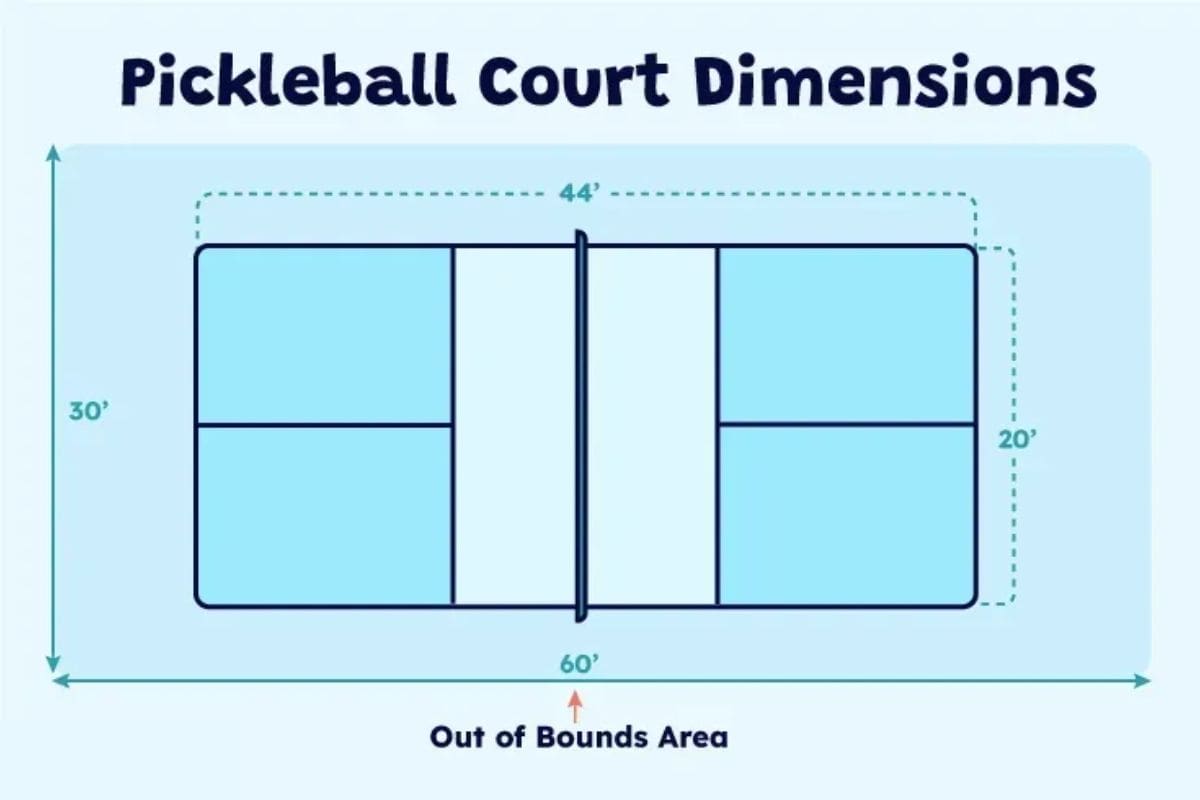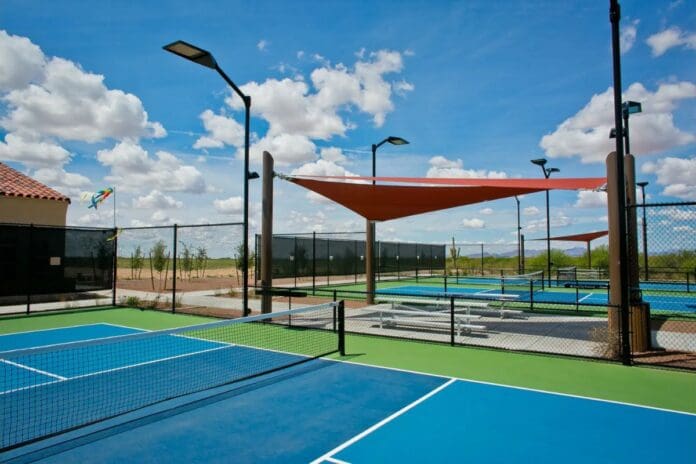Types of Pickleball Court Surfaces: When choosing a surface for a pickleball court, the impact on gameplay cannot be overstated. The options are varied: from repurposed gym floors and tennis courts to specially designed pickleball surfaces. Each choice affects the game’s speed, bounce, and overall dynamics. Here’s a detailed look at the top surfaces available to guide players in making an informed choice.
Top Surface Choices
1. Polyurethane Surfaces
Polyurethane surfaces, commonly used for indoor pickleball courts, also perform well outdoors. These surfaces consist of a rubber mat over a concrete base, providing cushioning that reduces joint stress. They come in varying shock-absorption levels, with some absorbing up to 32% of impact. While highly favored for their comfort, especially among seniors, the depth and cushioning options should be chosen based on specific needs.
2. Pro-Cushion Surface
The pro-cushion surface stands out for its balanced bounce and comfort, making it a top choice for serious players. This acrylic coating includes padding and flexible binders, delivering a consistent playing experience. However, improper installation can lead to dead-bounce zones, affecting gameplay.
Outdoor Pickleball Court Design
For outdoor pickleball courts, asphalt or concrete with a polyurethane overlay offers durability and weather resistance. These surfaces are suitable for various uses, from personal courts to community facilities. A professional installation ensures longevity and optimal performance, with custom padding enhancing comfort.
1. Plexiflor
Plexiflor, an acrylic paint used on concrete or asphalt, is known for its smooth finish and resistance to scratching. It reduces glare, extends the life of concrete, and ensures consistent bounce. Its textures, enhanced with silica sand, provide a secure grip, making it a popular choice for outdoor courts. Additionally, its low VOC emissions make it environmentally friendly.
2. Acrylotex
Acrylotex is a versatile surface that can be applied over concrete or asphalt, suitable for both indoor and outdoor use. Its various textures cater to different grip preferences, making it a reliable option for pickleball courts.
How to Convert Tennis Court Into Pickleball Court
Transforming an unused tennis court into a pickleball court is a practical option. Temporary lines can be drawn, and while the tennis net may be slightly low, it serves the purpose. Up to four pickleball courts can fit within a tennis court’s dimensions, with temporary nets required.
Specialty Surfaces
1. Sports Court Surfaces
Engineered for pickleball, sports court surfaces blend polyurethane and rubber, offering durability and comfort. These surfaces withstand heavy use and various weather conditions, resist fading, and are easy to maintain. Though pricier due to the need for a concrete or asphalt base, they provide excellent player comfort and ball response.
2. Asphalt Pickleball Courts
Asphalt is a cost-effective, durable option for outdoor pickleball courts. It resists cracking and maintains its appearance with proper maintenance. However, its hardness can be tough on joints, and it may not be as comfortable as other surfaces.
3. Wooden Pickleball Courts
Wooden pickleball courts, typically made from maple or hardwood over a concrete base, offer a softer playing surface and a natural aesthetic. However, they are indoor-only and require proper sealing to prevent slipperiness and potential damage from moisture.
4. Concrete Pickleball Courts
Concrete courts, similar to asphalt in their durability, are a common choice for outdoor settings. They are affordable and easy to mark, but like asphalt, they can be hard on joints and challenging to repair.
Choosing the right pickleball court surface depends on your budget, location, and specific needs. While concrete and asphalt are economical, a sports court surface often provides the best overall playing experience.
Pickleball Court Dimensions and Markings
A standard pickleball court measures 20 feet in width and 44 feet in length, divided by a net standing 36 inches at the posts and 34 inches at the center. For optimal play, add 8 feet at the back and 5 feet on the sides, making the total dimensions 60×30 feet. Court lines should be 2 inches wide, contrasting with the surface color, typically white against dark green.

Pickleball Court Markings Include:
- Baseline: 44 feet long, marking the serving area.
- Non-Volley Line: 7 feet from the net, defining the kitchen zone.
- Sidelines: Mark the court’s width.
- Centerline: Separates the court into odd and even sections.
News in Brief: Types of Pickleball Court Surfaces
Selecting the ideal surface for a pickleball court can enhance gameplay significantly. Key options include polyurethane surfaces, known for their cushioning and durability, and pro-cushion surfaces that offer a consistent bounce and comfort. Outdoor courts benefit from asphalt or concrete with polyurethane overlays for weather resistance. Specialty surfaces like Plexiflor and Acrylotex provide additional benefits like glare reduction and grip. Converting tennis courts is a practical alternative. While asphalt and concrete are cost-effective, sports court surfaces deliver superior comfort and performance. Ultimately, the choice depends on budget, location, and desired court features.
Also Read: Australian Star Evans Defeats Hewett in PPA Tour Round of 64

